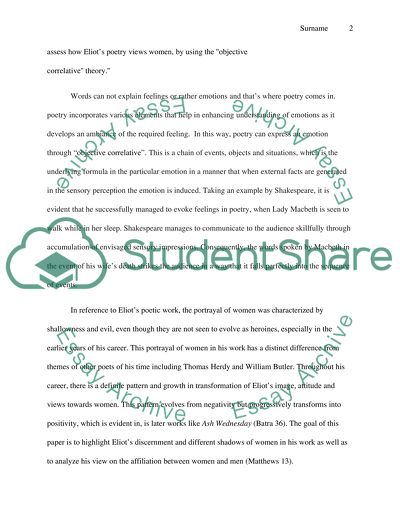Cite this document
(“Does T.S. Eliot's poetry have trouble with women ('He'll want to know Essay”, n.d.)
Does T.S. Eliot's poetry have trouble with women ('He'll want to know Essay. Retrieved from https://studentshare.org/literature/1646071-does-ts-eliots-poetry-have-trouble-with-women-hell-want-to-know-what-you-done-with-that-money-he-gave-you-to-get-yourself-some-teeth-twlii
Does T.S. Eliot's poetry have trouble with women ('He'll want to know Essay. Retrieved from https://studentshare.org/literature/1646071-does-ts-eliots-poetry-have-trouble-with-women-hell-want-to-know-what-you-done-with-that-money-he-gave-you-to-get-yourself-some-teeth-twlii
(Does T.S. Eliot's Poetry Have Trouble With Women ('He'Ll Want to Know Essay)
Does T.S. Eliot's Poetry Have Trouble With Women ('He'Ll Want to Know Essay. https://studentshare.org/literature/1646071-does-ts-eliots-poetry-have-trouble-with-women-hell-want-to-know-what-you-done-with-that-money-he-gave-you-to-get-yourself-some-teeth-twlii.
Does T.S. Eliot's Poetry Have Trouble With Women ('He'Ll Want to Know Essay. https://studentshare.org/literature/1646071-does-ts-eliots-poetry-have-trouble-with-women-hell-want-to-know-what-you-done-with-that-money-he-gave-you-to-get-yourself-some-teeth-twlii.
“Does T.S. Eliot's Poetry Have Trouble With Women ('He'Ll Want to Know Essay”, n.d. https://studentshare.org/literature/1646071-does-ts-eliots-poetry-have-trouble-with-women-hell-want-to-know-what-you-done-with-that-money-he-gave-you-to-get-yourself-some-teeth-twlii.


